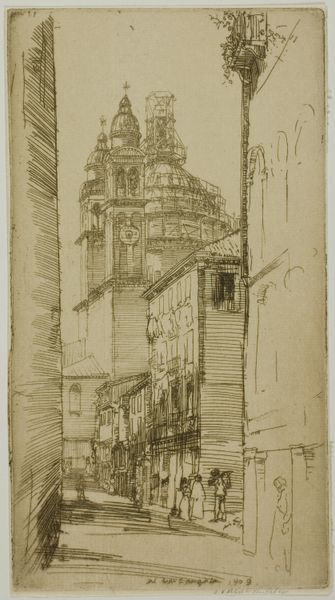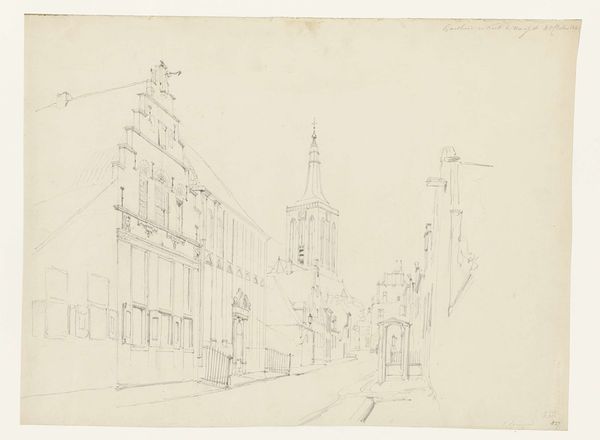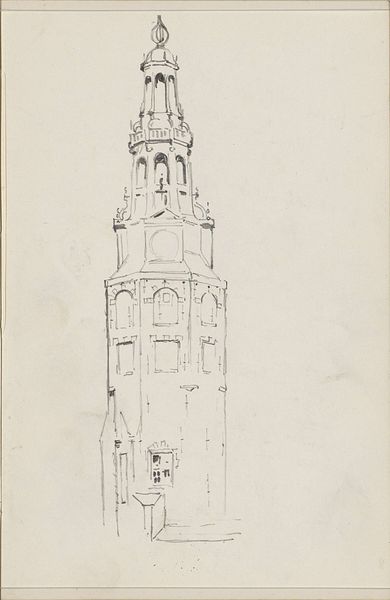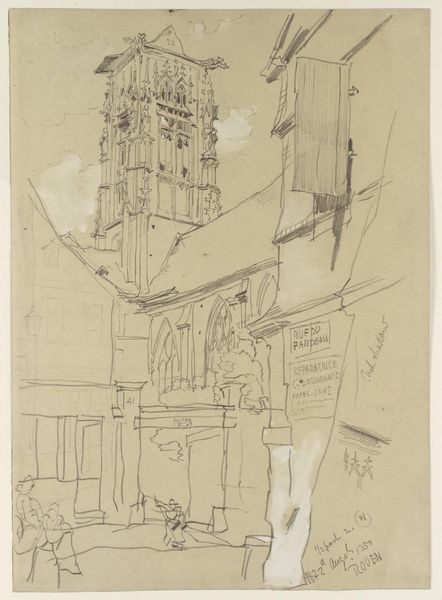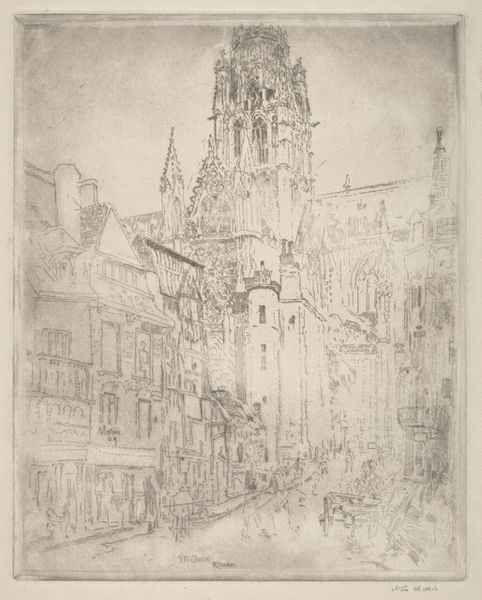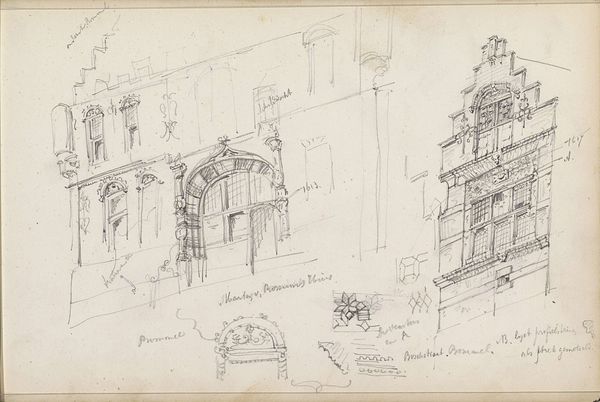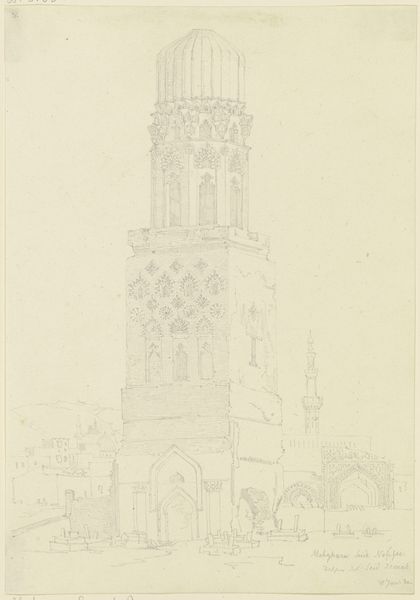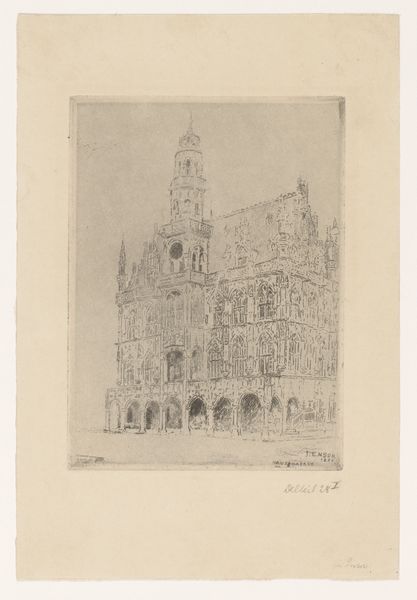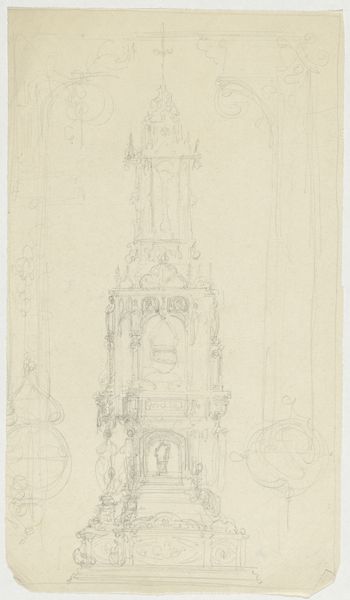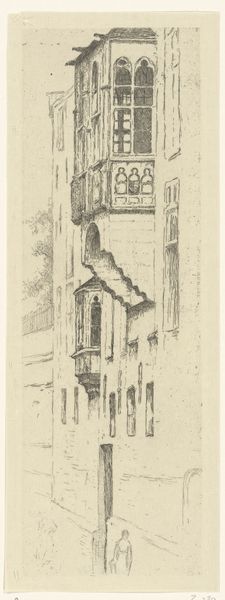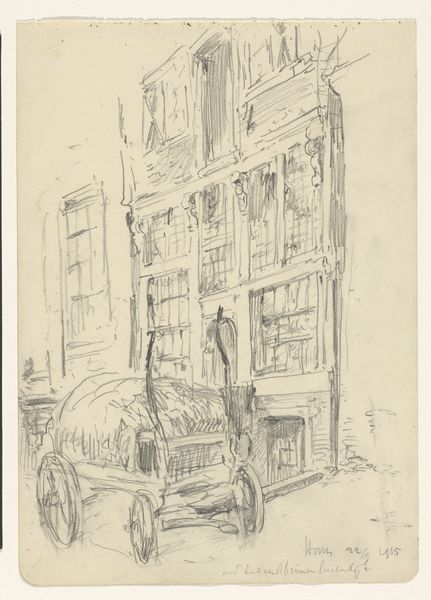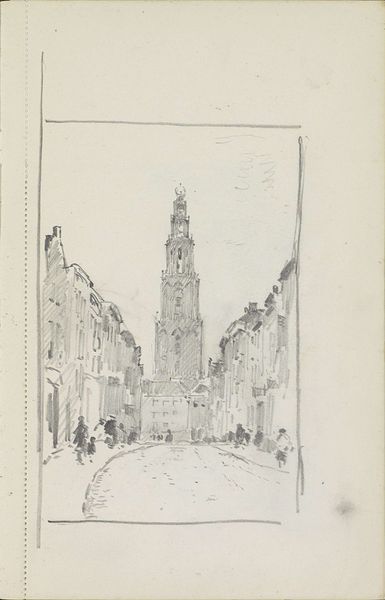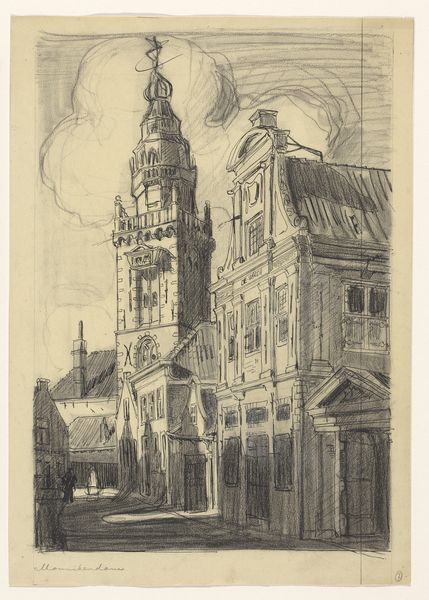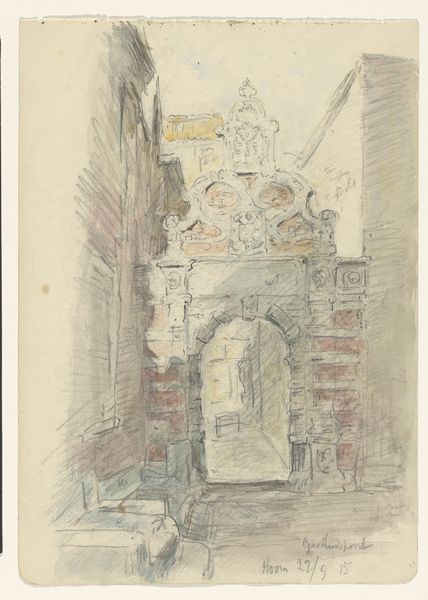
drawing, pencil
#
drawing
#
quirky sketch
#
dutch-golden-age
#
mechanical pen drawing
#
pen sketch
#
personal sketchbook
#
sketchwork
#
ink drawing experimentation
#
pen-ink sketch
#
pencil
#
sketchbook drawing
#
cityscape
#
storyboard and sketchbook work
#
sketchbook art
Dimensions: height 265 mm, width 175 mm
Copyright: Rijks Museum: Open Domain
Curator: This drawing, “Speeltoren en gevel van de Waag te Monnickendam,” offers a glimpse into Jan Hoynck van Papendrecht's sketchbook, likely dating from sometime between 1891 and 1899. It’s a pencil and ink rendering of a town square. Editor: It has this breezy, informal feeling to it. Almost like the artist was trying to capture the essence of the buildings quickly, you know? Like he sketched it sitting at a cafe with a drink in hand. The hurried lines almost express a certain movement within a bustling civic center. Curator: That immediacy aligns with the practice of urban sketching which gained momentum in the late 19th century, didn’t it? Depicting public spaces becomes a way to chart a rapidly changing modern life, right? Editor: Exactly! It's also tempting to read these architectural drawings in a slightly more political way, if you consider how the rapidly industrializing Dutch cities of this period affected the concept of civic identity for many people. This is when many started to rethink the historical symbols and iconography that were attached to places, social status, or civic pride. Curator: Good point, given the shifting political landscapes across Europe at this time. We should be careful of reading the gaze here, too. I think the fact that it is "just a sketch" also affected its significance. I think if this were, say, a painted history scene on a grand scale, it would signal clear messaging about a location, event, or historical figure. Editor: Sure. Yet, the sketch form, so easily reproduced and shared among burgeoning urban populations, lends a democratic sensibility, almost undermining established political interpretations. The sketch can also represent different experiences. Curator: And even with this understated approach, these Dutch cityscapes in drawing form, were significant in fostering local and national identity. Editor: Perhaps these sketchbook pages, more so than monumental canvases, encapsulate the democratizing impulse that redefined Dutch society at the dawn of the 20th century. Curator: Absolutely. This casual sketch might have actually become a tool for community and shared meaning-making in the long term. Thanks for making that clearer to me. Editor: Of course! Art and history are interwoven, but not always obviously. And for me, that’s what keeps it alive and relevant.
Comments
No comments
Be the first to comment and join the conversation on the ultimate creative platform.
